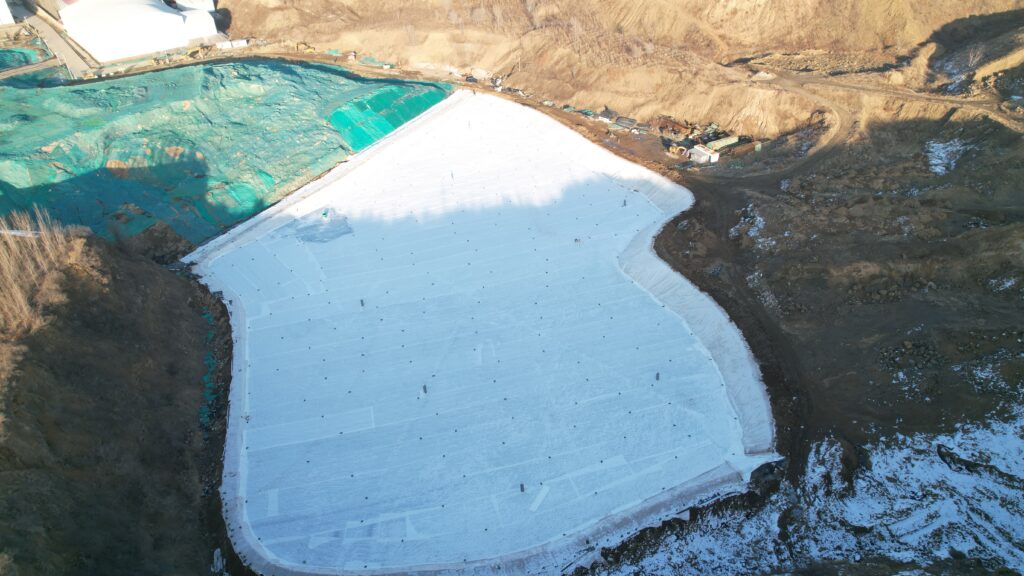What are the functions of geotextiles?
Geotextiles are synthetic materials used in civil engineering and construction projects for various purposes. Some of their primary functions include:
Separation: Geotextiles prevent the mixing of different soil types or aggregate layers, such as preventing fine soil particles from mixing with larger stone layers in road construction. This separation helps maintain the integrity and performance of the engineered structure over time.
Filtration: They allow water to pass through while preventing the migration of soil particles. This filtration function is crucial in drainage systems, retaining walls, and erosion control applications, as it helps to maintain soil stability and prevent erosion.
Drainage: Geotextiles can be used to facilitate the flow of water away from structures, such as in drainage trenches or beneath roadways. By providing a pathway for water to flow, they help reduce hydrostatic pressure and prevent waterlogging, which can compromise the stability of the structure.
Reinforcement: In some cases, geotextiles are used to reinforce soil structures, such as embankments or retaining walls. They can increase the soil’s bearing capacity, reduce settlement, and improve overall stability.
Protection: Geotextiles can protect impermeable liners in landfill applications or geomembranes in environmental containment systems from punctures or damage caused by sharp objects or abrasion.
Erosion control: By stabilizing soil surfaces and preventing the migration of soil particles, geotextiles help control erosion on slopes, riverbanks, and other vulnerable areas. They can also be used in conjunction with vegetation to promote revegetation and natural erosion control processes.
Overall, geotextiles play a crucial role in enhancing the performance, durability, and sustainability of civil engineering and construction projects by providing solutions for soil stabilization, drainage, erosion control, and more.
How good is the filterability of geotextile?
The filterability of geotextiles varies depending on several factors, including the material composition, pore size distribution, thickness, and construction of the geotextile. In general, geotextiles are designed to allow water to pass through while retaining soil particles, making them effective filters in many civil engineering and environmental applications.
The filterability of a geotextile is typically evaluated based on its hydraulic conductivity, which measures the rate at which water can flow through the material under a given hydraulic gradient. Geotextiles with higher hydraulic conductivity values generally have better filterability because they allow water to pass through more quickly, reducing the risk of clogging and maintaining effective filtration over time.
Manufacturers often provide specifications and testing data for geotextiles to help engineers and designers select the most suitable product for specific filtration requirements. Additionally, the proper installation and maintenance of geotextiles are essential to ensure optimal filterability and long-term performance in practical applications.
Why use geotextile filter?
Geotextile filters are used in civil engineering and construction projects for several important reasons:
Erosion Control: Geotextile filters help prevent soil erosion by stabilizing soil particles and allowing water to pass through while retaining the soil. This is crucial for protecting slopes, embankments, riverbanks, and other vulnerable areas from erosion caused by rainfall, runoff, and other environmental factors.
Sediment Control: By filtering sediment from stormwater runoff and other sources, geotextile filters help improve water quality in rivers, lakes, and other water bodies. They trap sediment and pollutants, preventing them from entering waterways and causing environmental harm.
Drainage: Geotextile filters are commonly used in drainage systems to prevent clogging and maintain the flow of water. By allowing water to pass through while retaining soil particles, they help prevent the buildup of excess water pressure behind retaining walls, beneath roadways, and in other structures, reducing the risk of damage and instability.
Soil Stabilization: In some applications, geotextile filters are used to stabilize soil and prevent the migration of soil particles. By separating different soil layers and preventing them from mixing, they help maintain the integrity and stability of engineered structures such as roads, embankments, and retaining walls.
Environmental Protection: Geotextile filters play a vital role in environmental protection by preventing soil erosion, reducing sedimentation in water bodies, and filtering pollutants from runoff. They help preserve natural habitats, protect water quality, and mitigate the environmental impacts of construction and development activities.
Overall, geotextile filters are essential components of many civil engineering and environmental projects, providing effective solutions for erosion control, sediment management, drainage, soil stabilization, and environmental protection.
近期文章
Author
-

Founded in 2002, Tinhy's team focuses on the manufacturing, marketing, installation, application and research and development of geosynthetic materials.
View all posts

